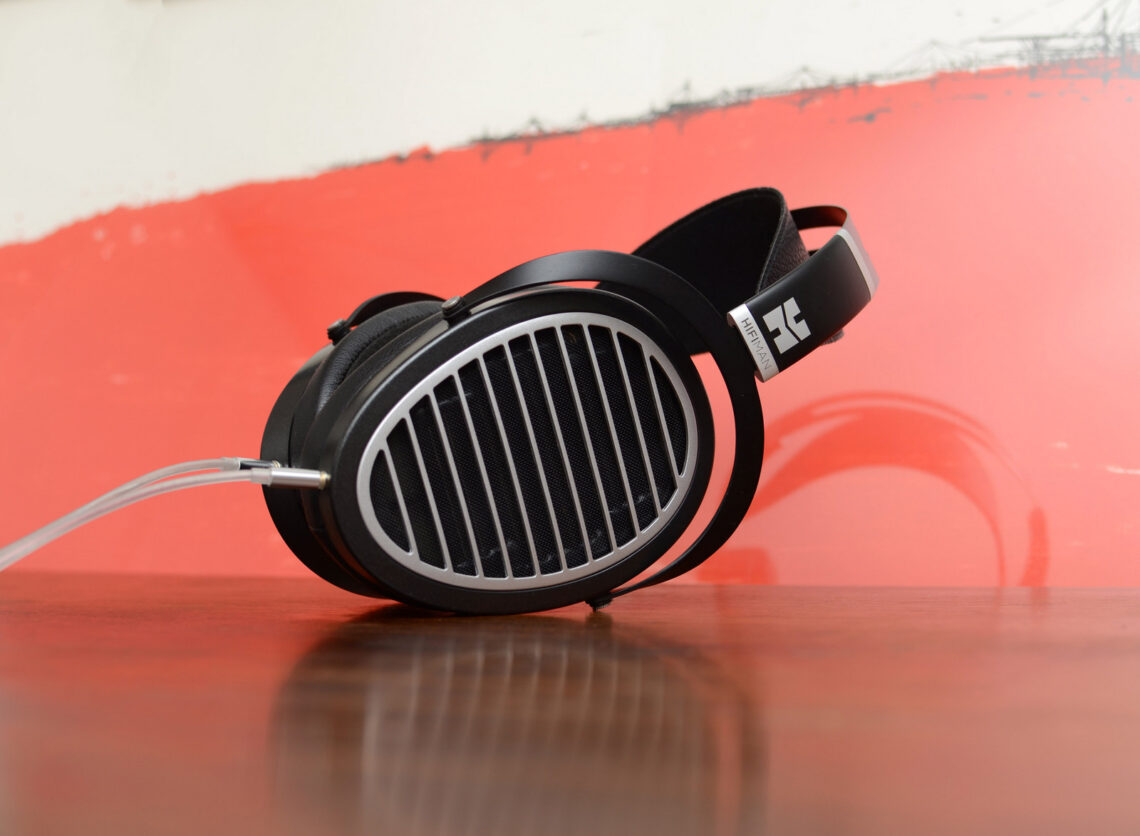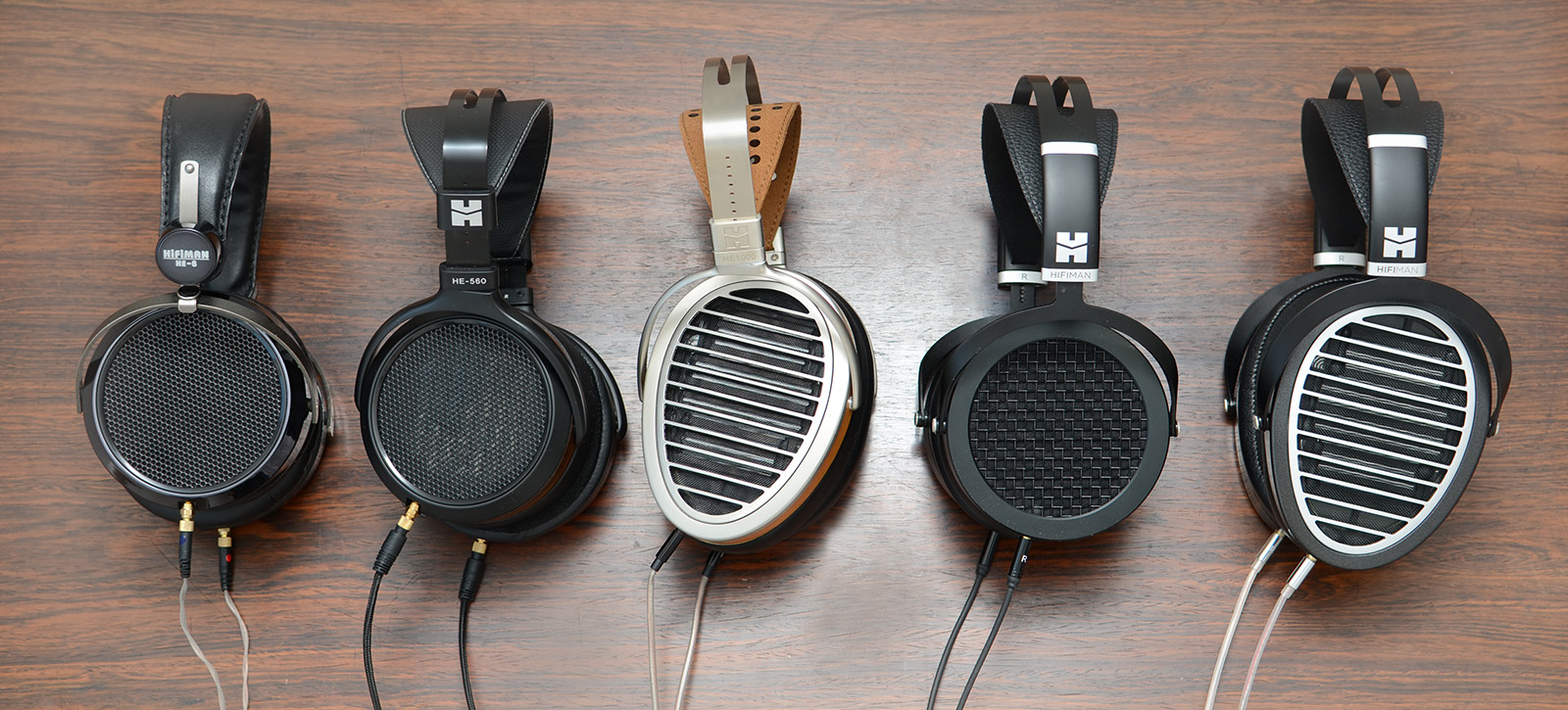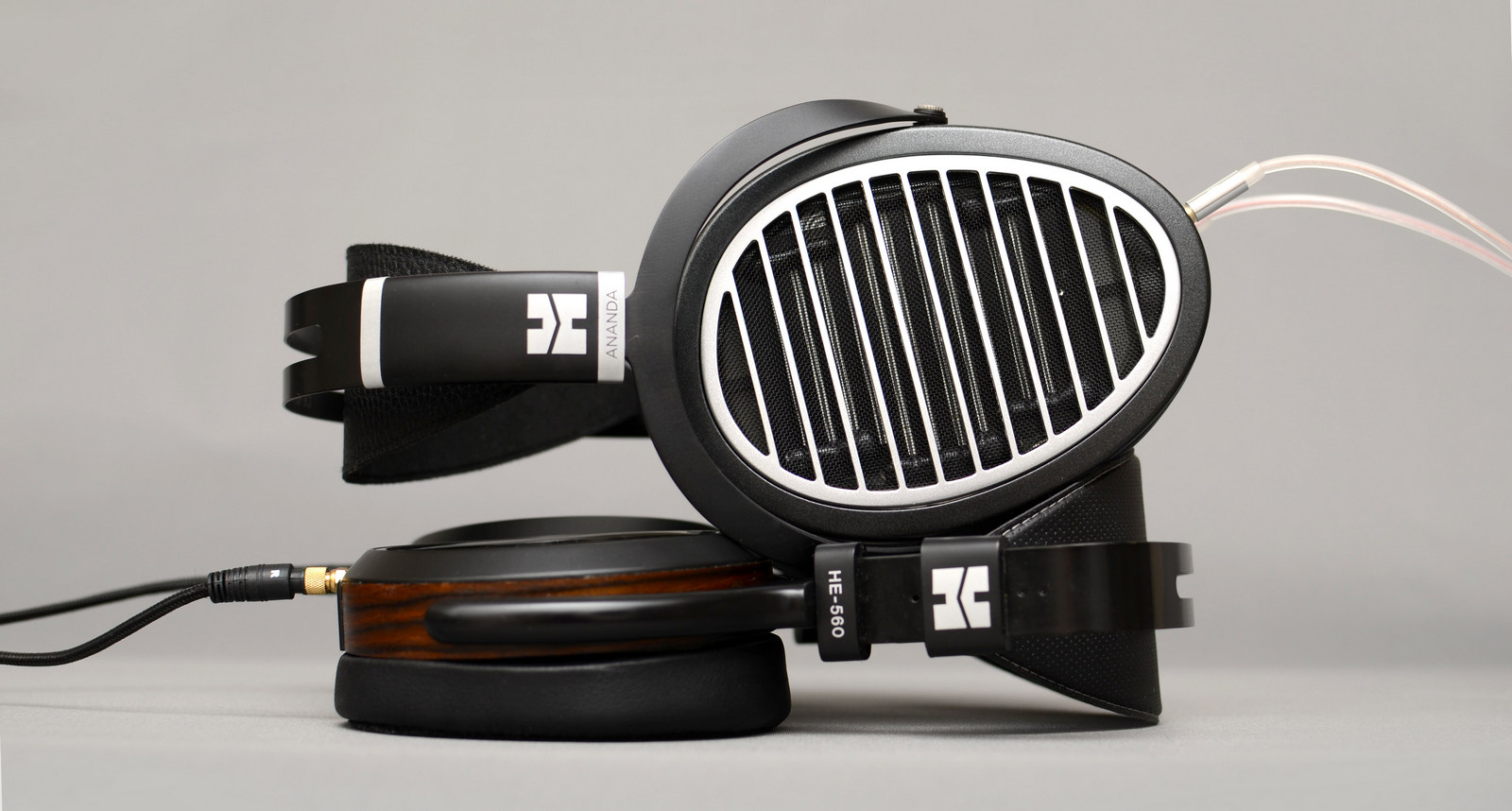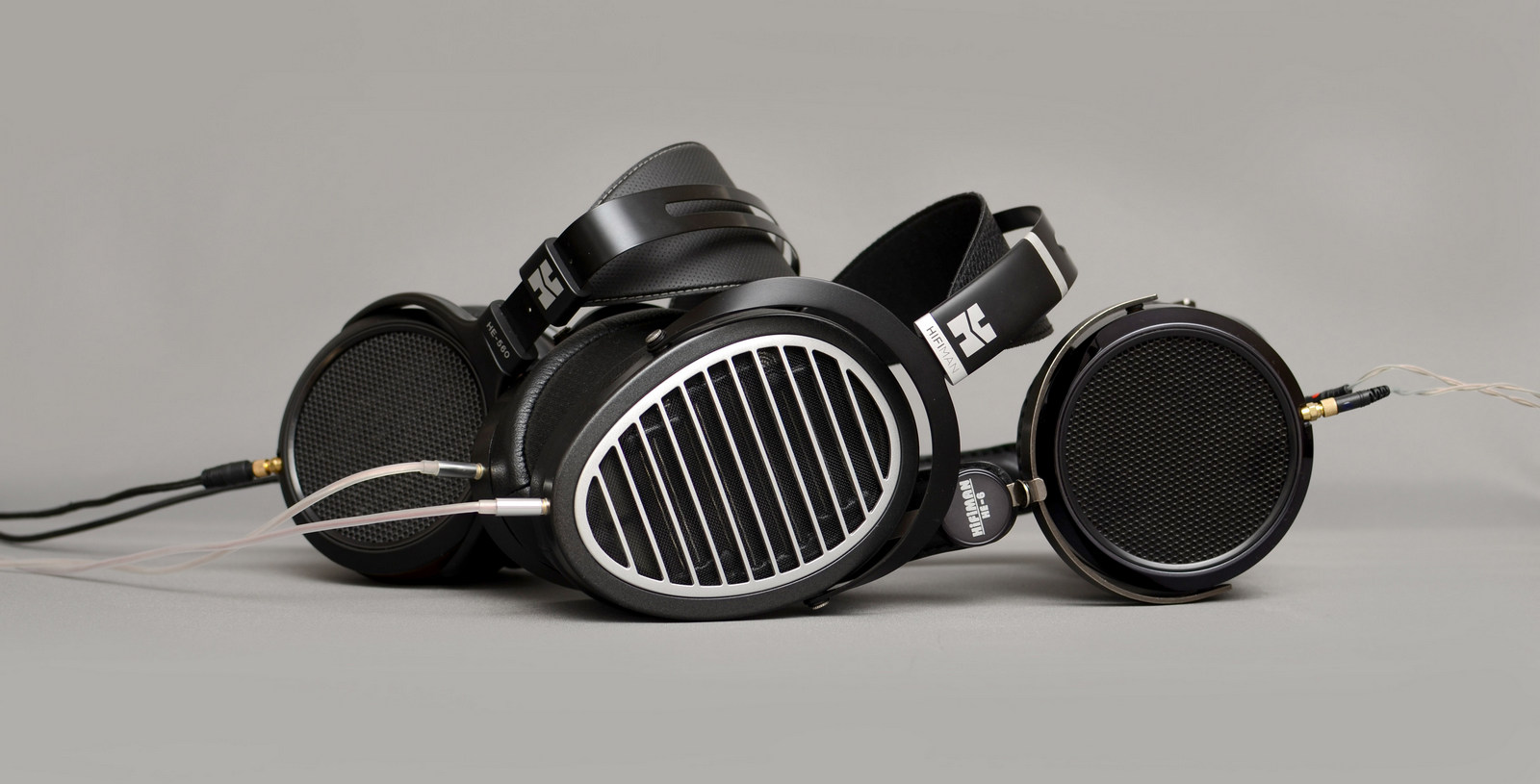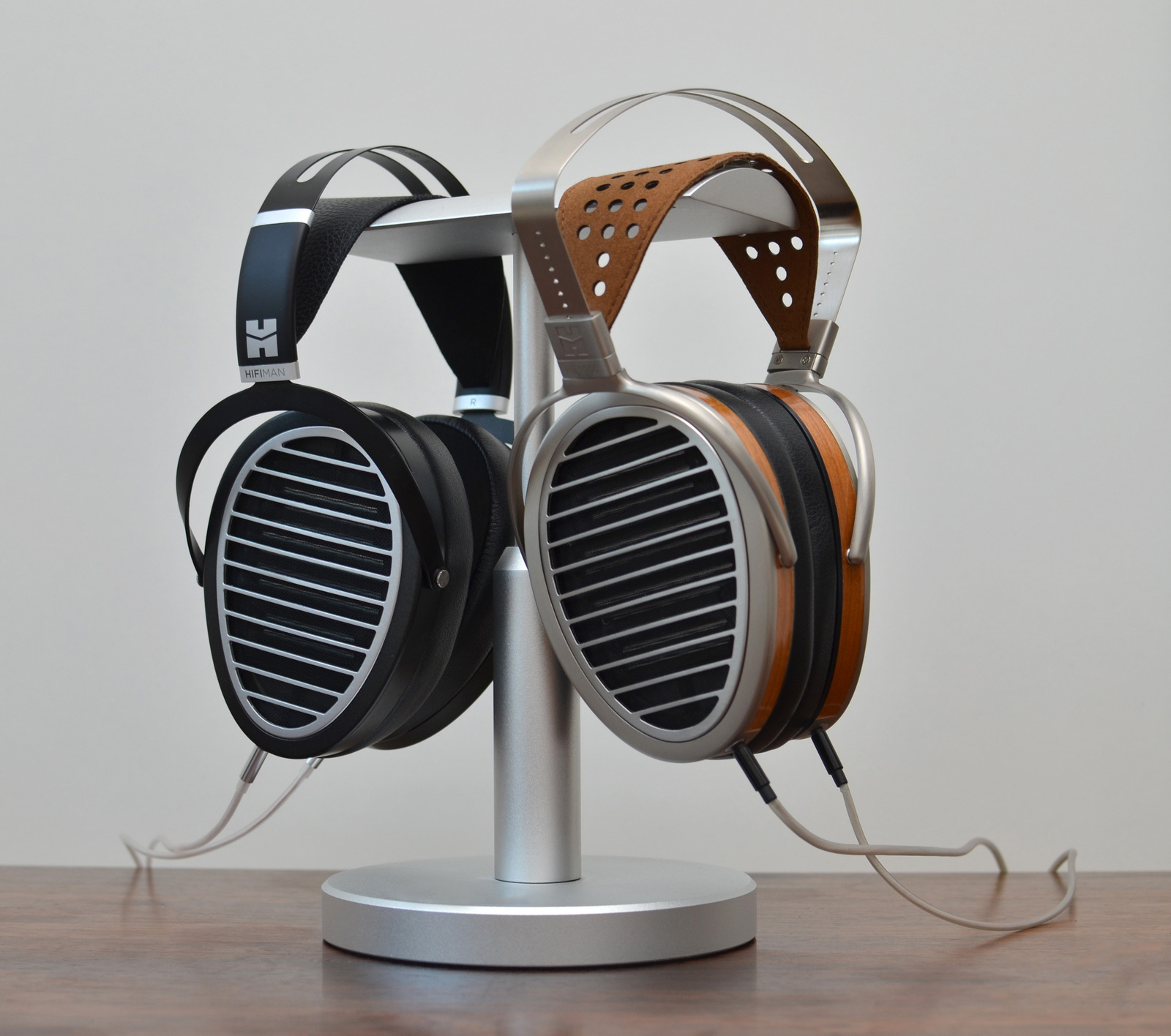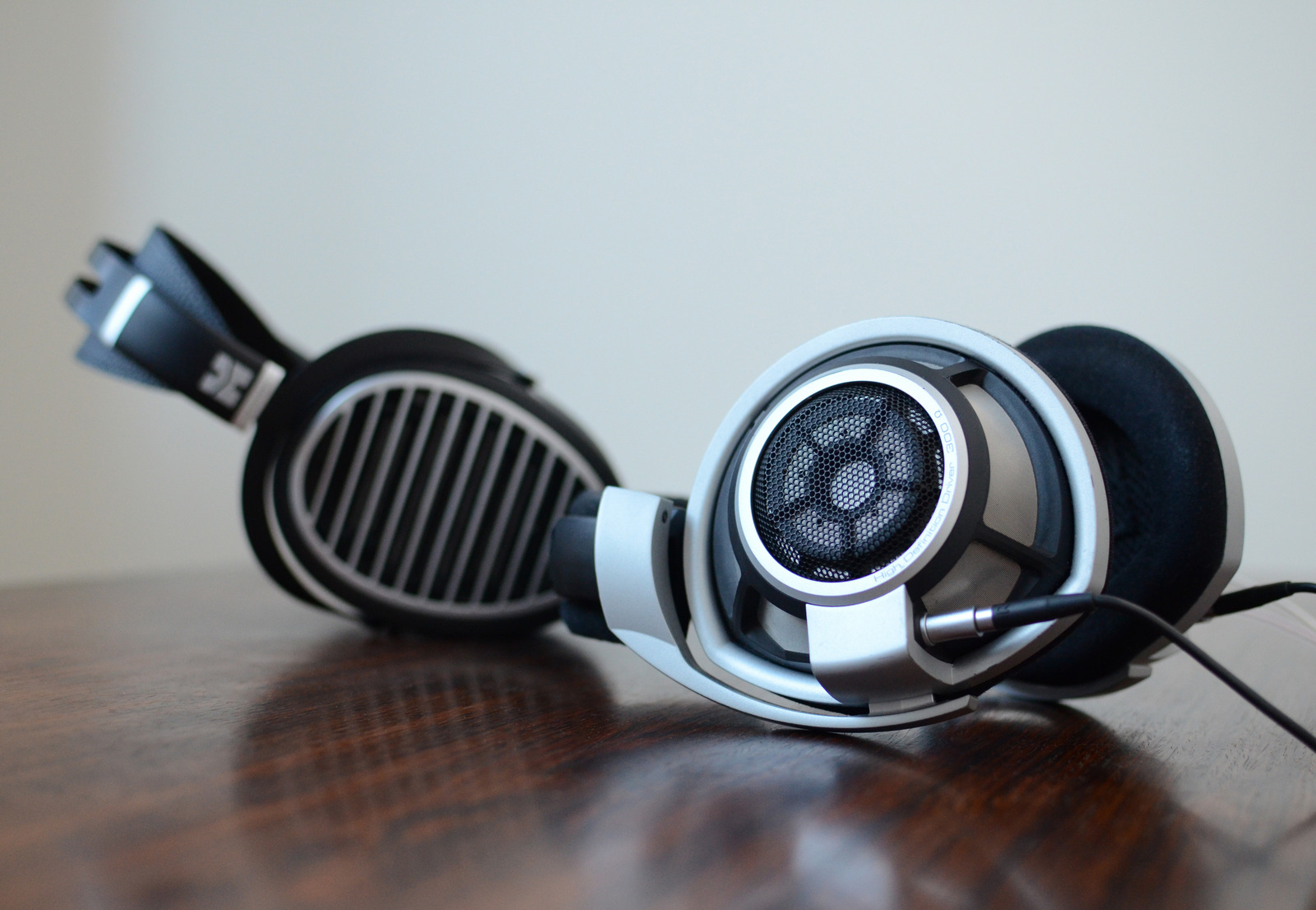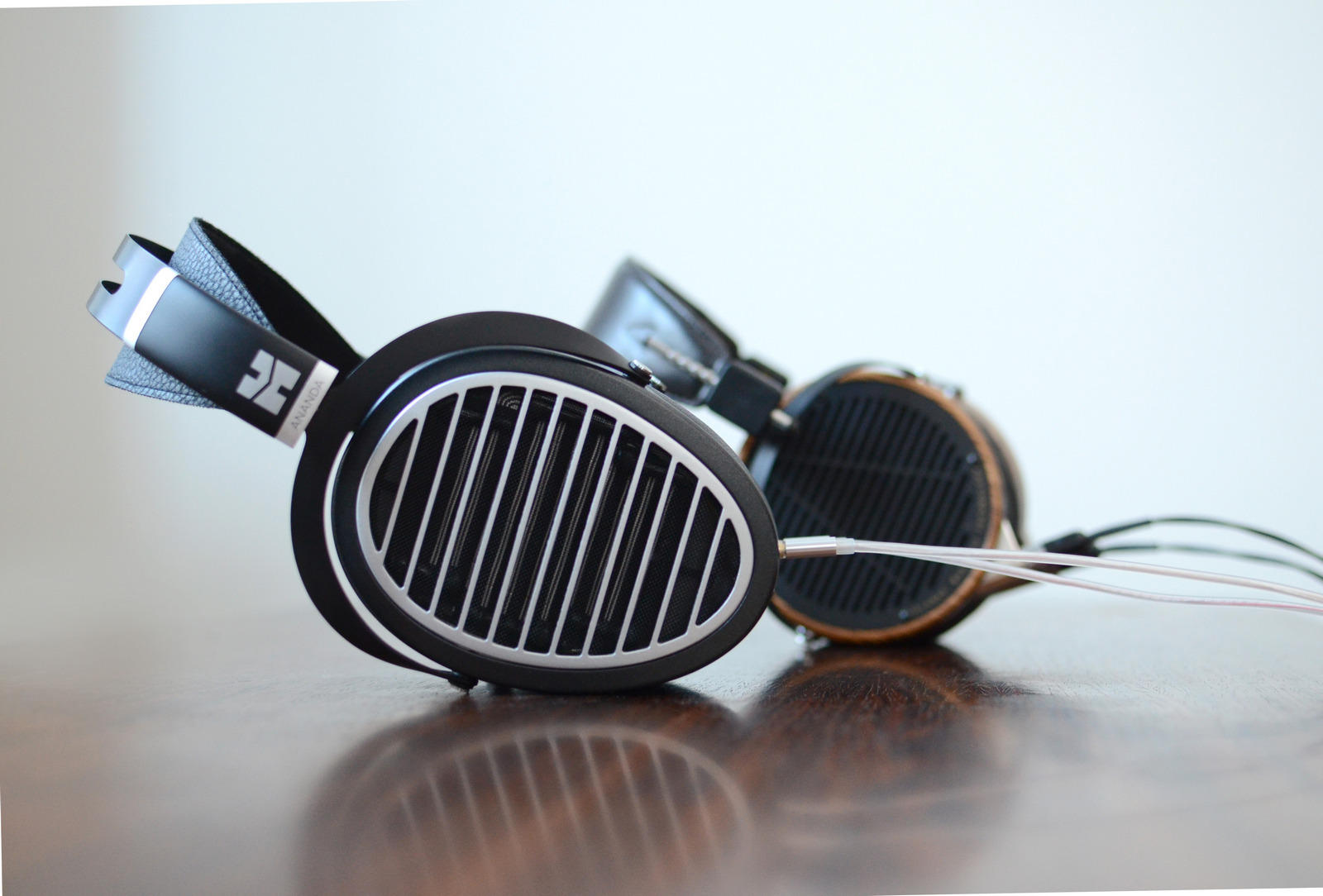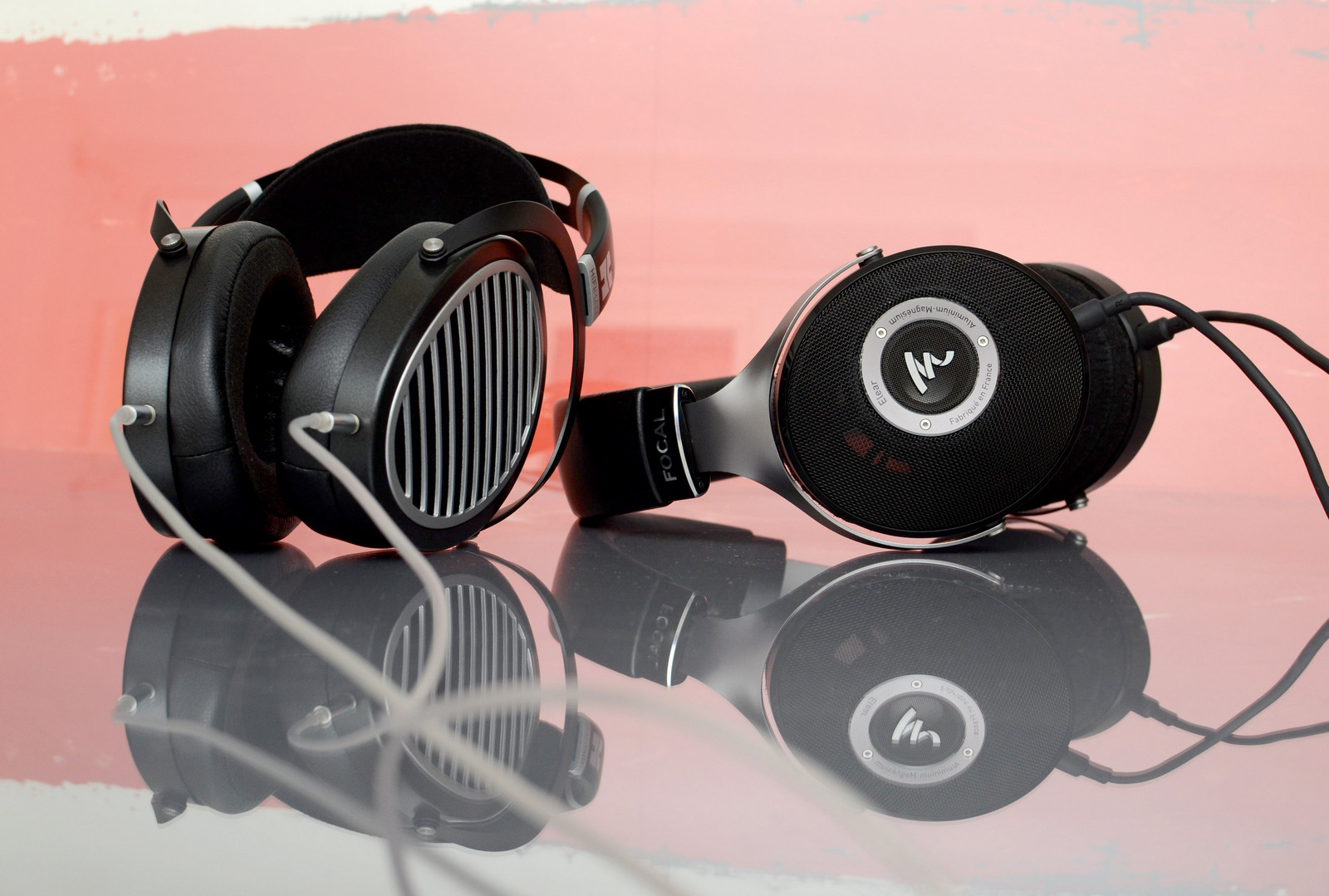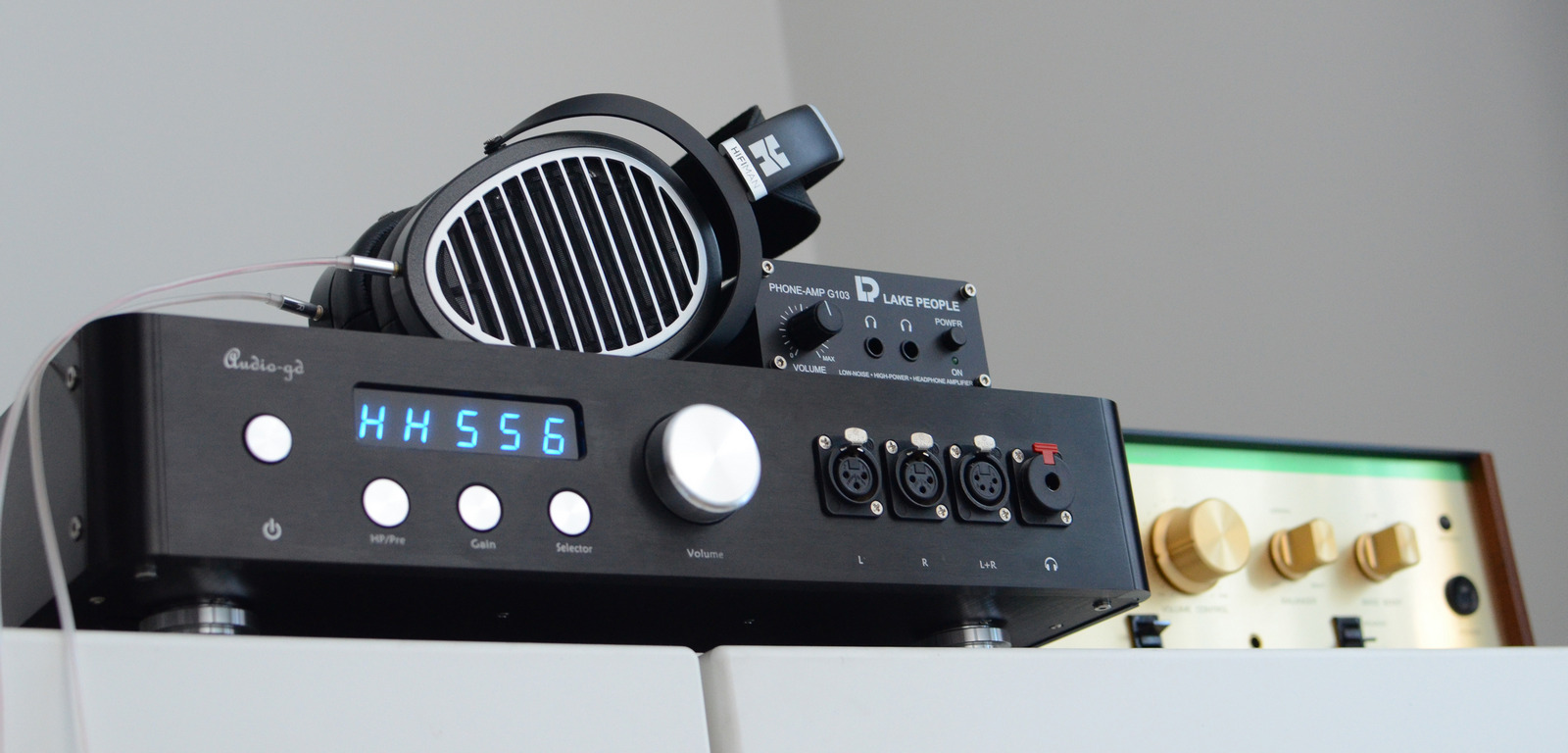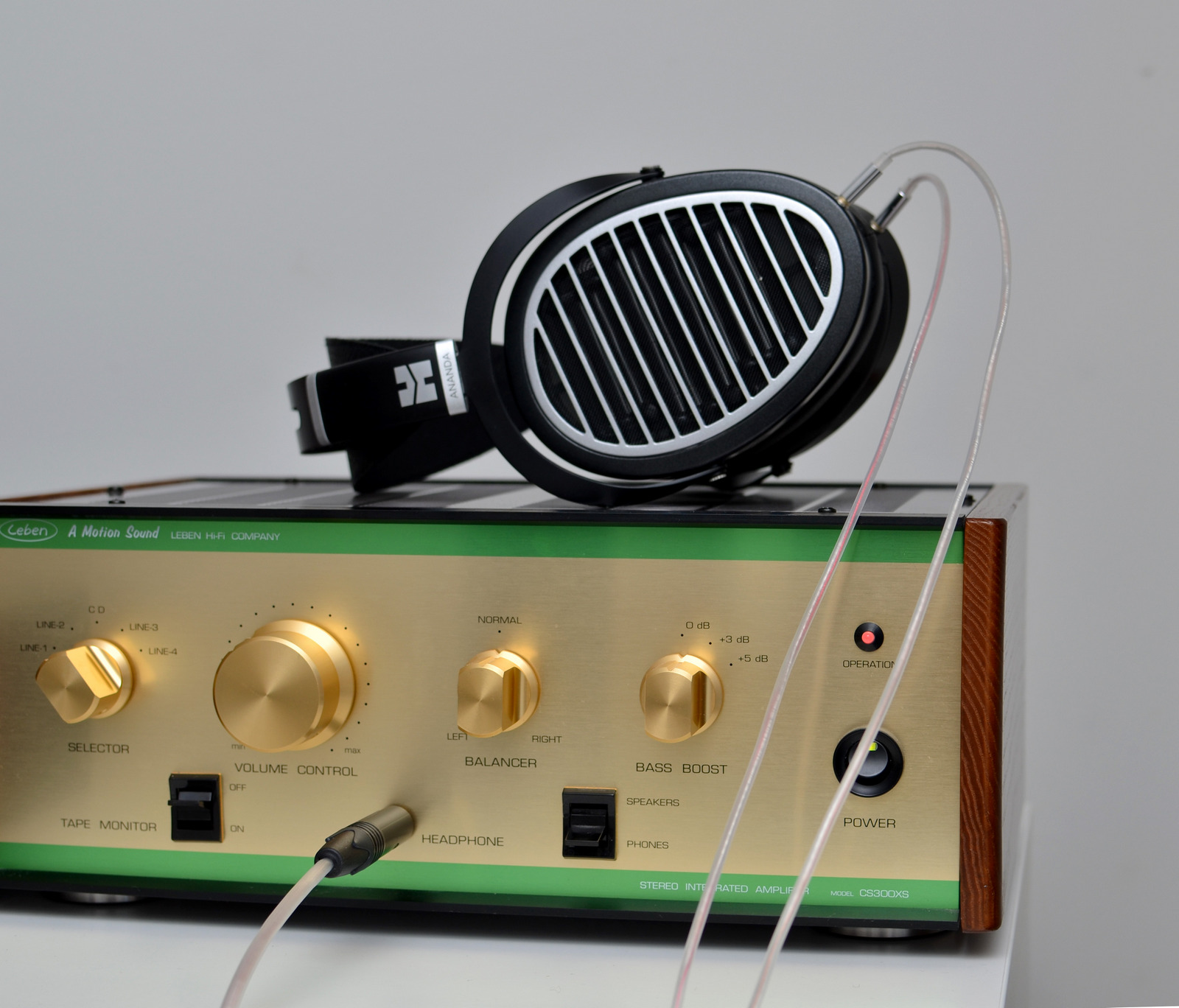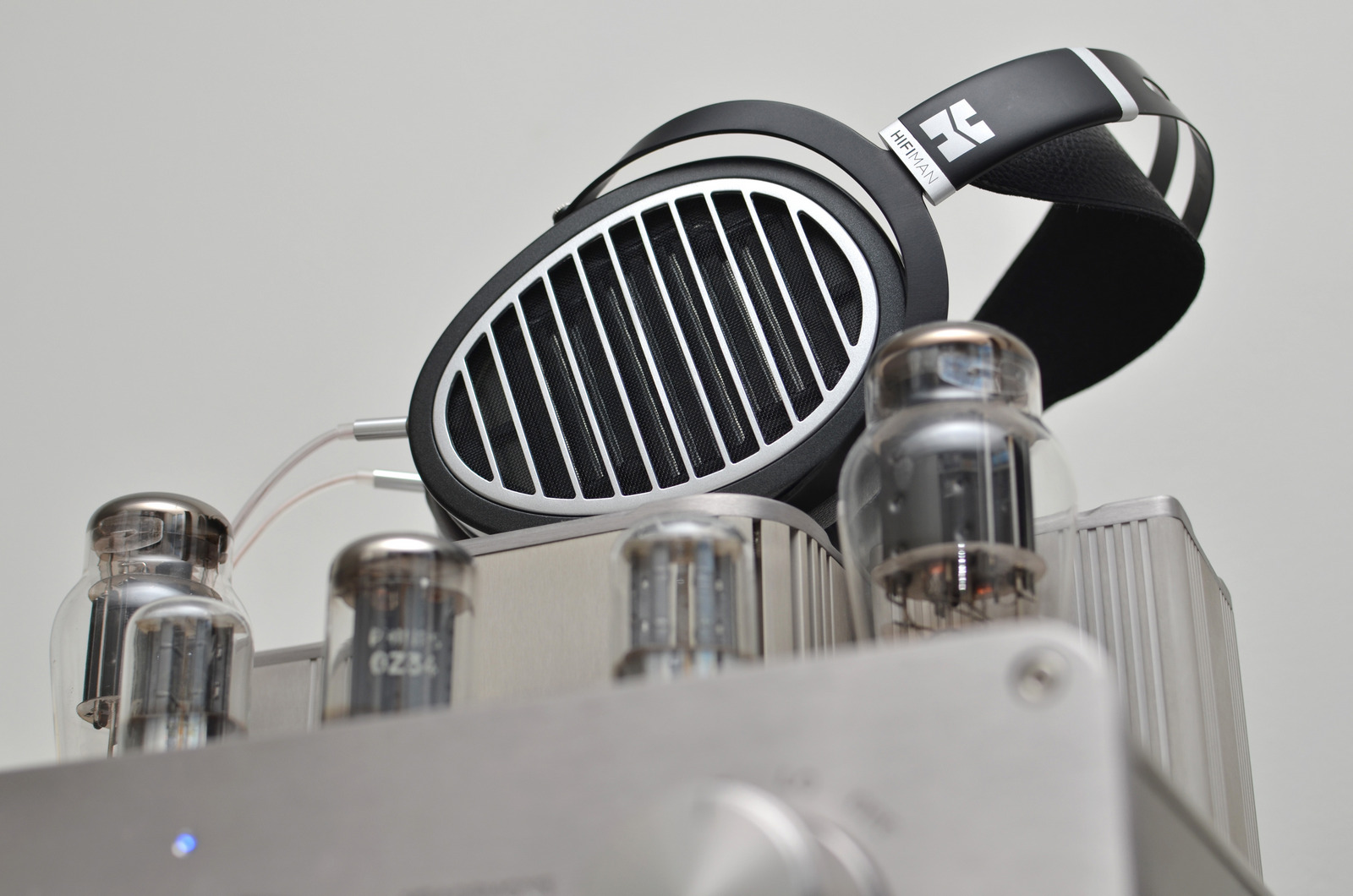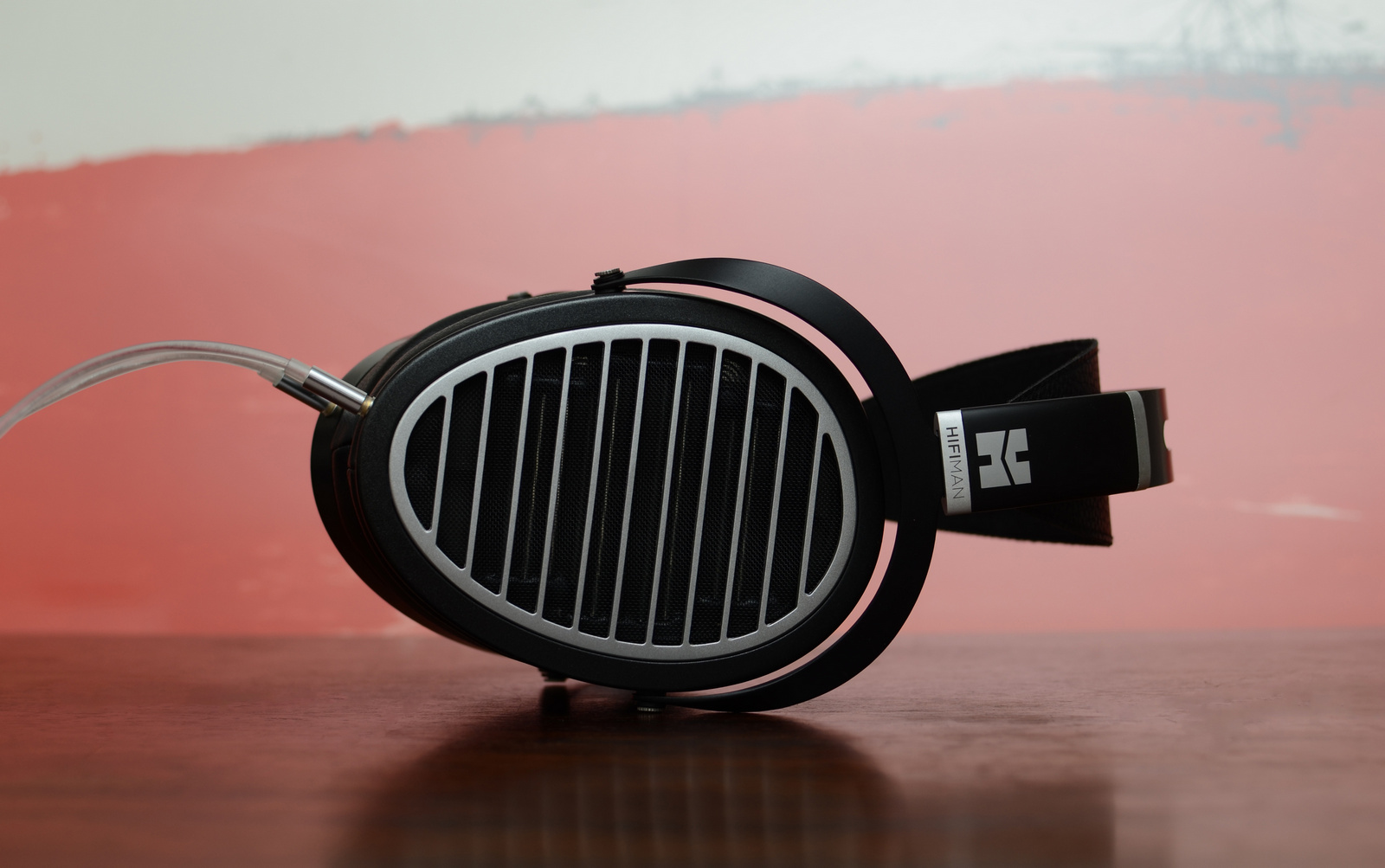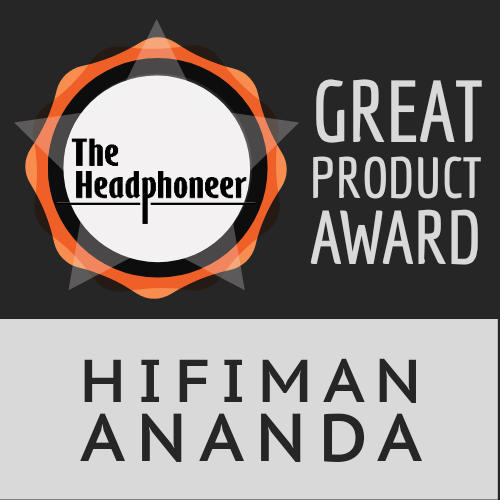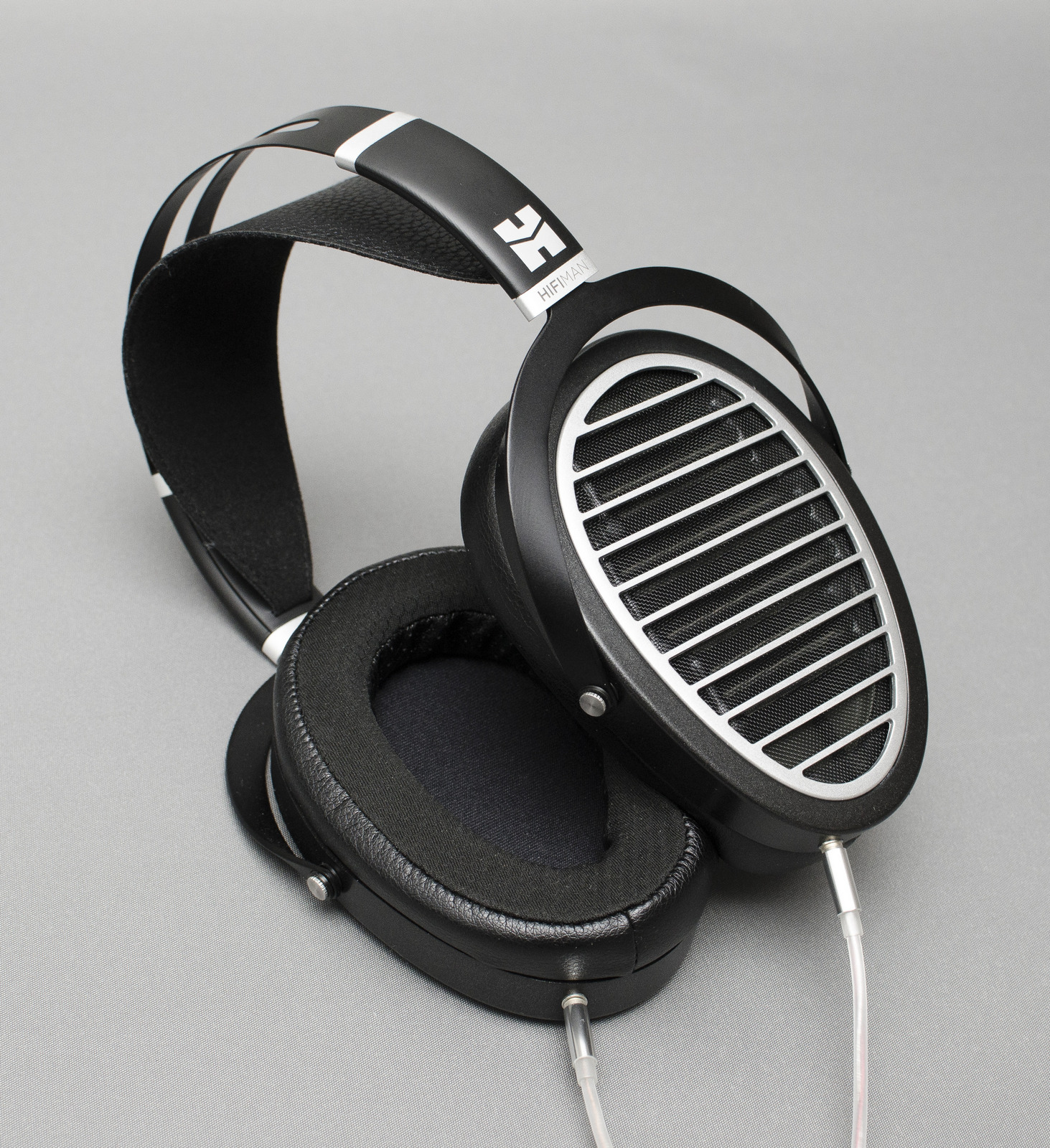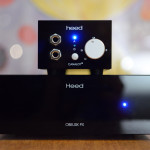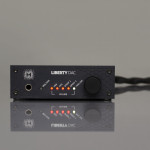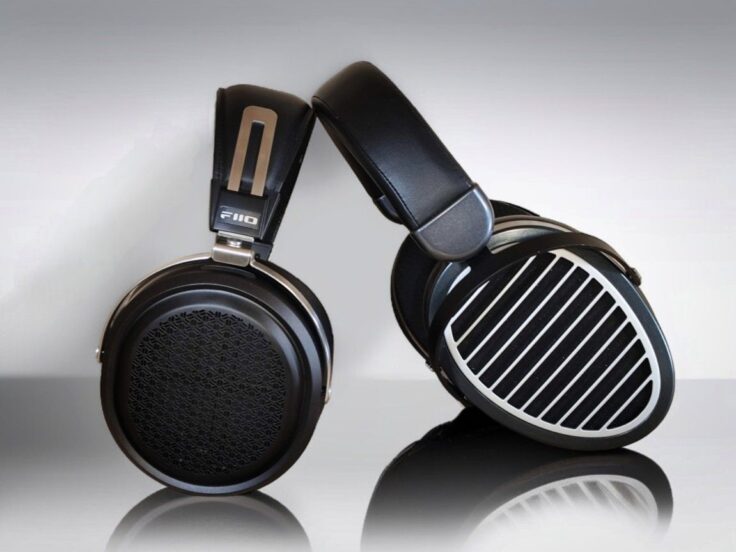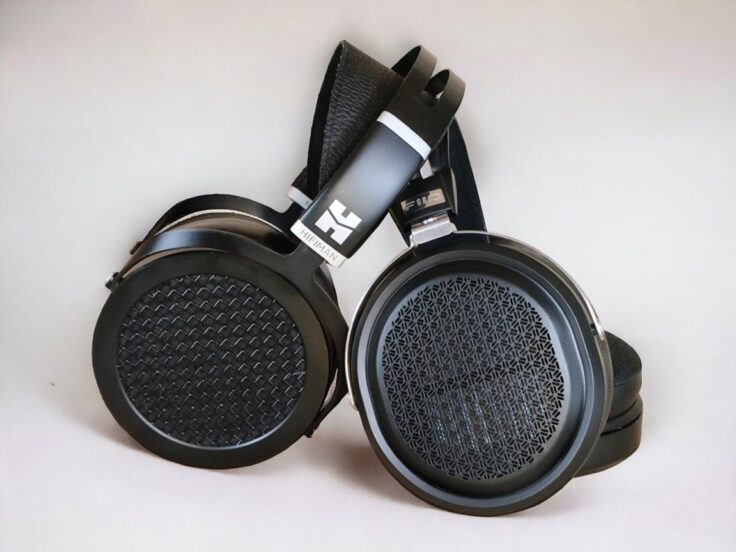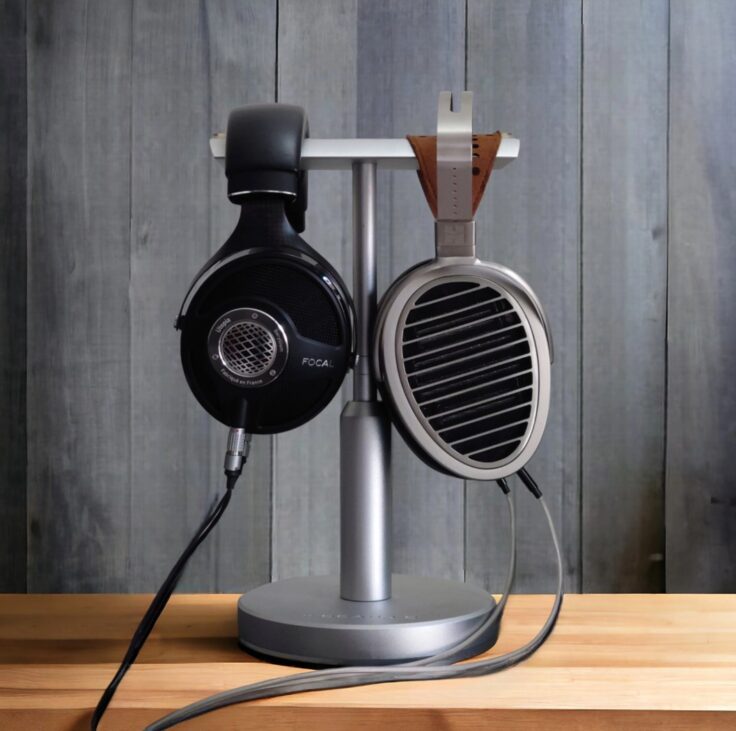The planar magnetic Hifiman Ananda is one of two models that take over the style, looks and price/performance profile of the Himan Edition X-models. The other headphone is called Arya, and sports a higher price tag, different driver technology and headband. They are priced at USD 999 and 1599 respectively. I will review the Arya later.
The Ananda is marketed as an easy to drive full-size headphone, and with a rated efficiency of 103 dB and an impedance of 25 ohms, it certainly seems to be more suited for semi-portable/lightweight systems than most of Hifiman’s previous offerings, which usually needs quite a lot of power sound at their best. The already mentioned Arya is rated at at 90 dB / 35 ohm which is the same as the HE1000v2 and a significantly heavier load for the amplifier.
For all the nice buzzwords, please check out Hifiman’s own descriptions.
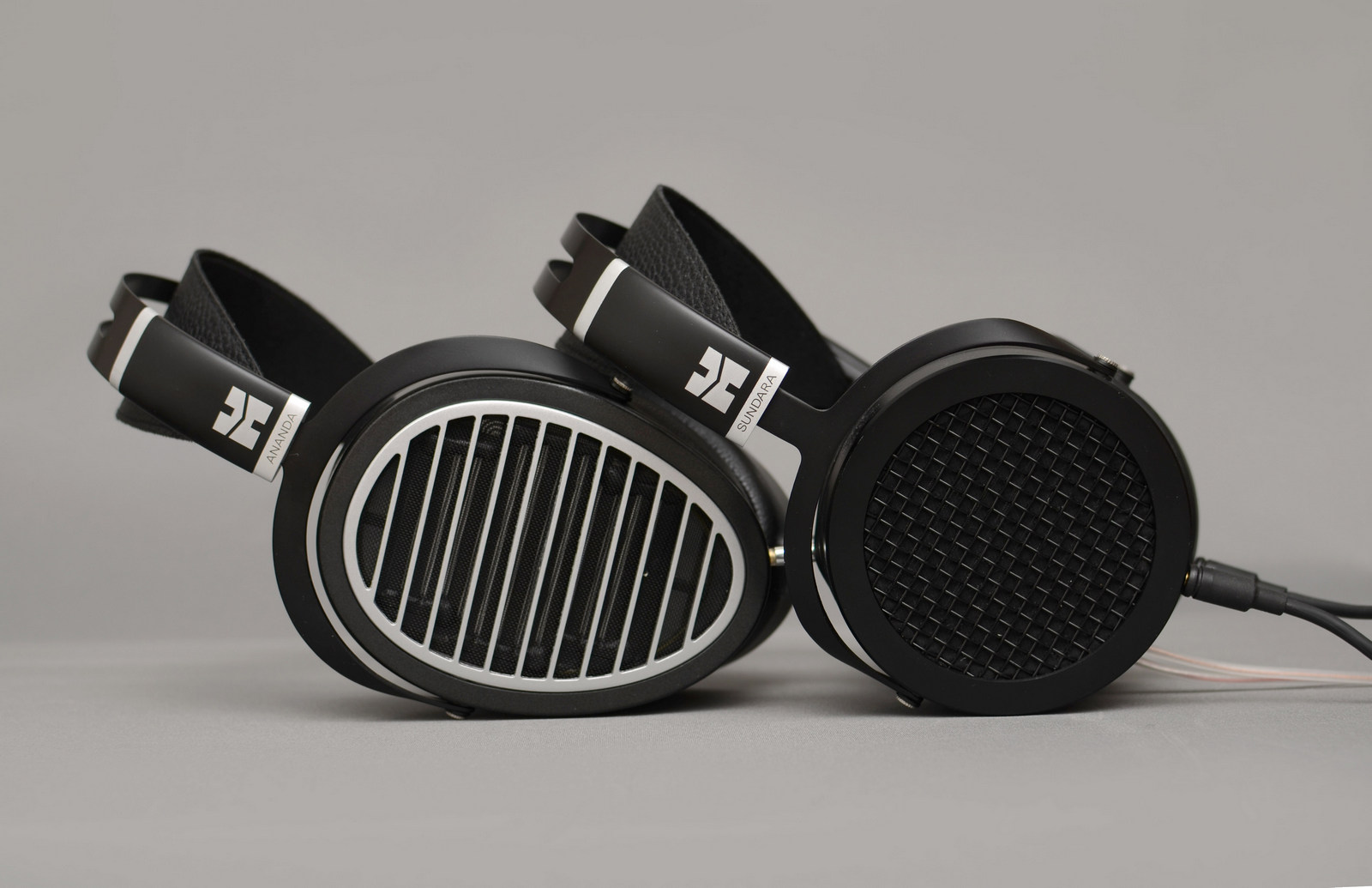
Build and Quality
The Ananda has Edition X/HE-1000-style ear shaped ear cups and Sundara-style headband. It is very light, and I find it comfortable enough, but I really miss the swivel action of previous models. It has 3.5 mm mono-plug detachable cables, which seems to be the new standard for Hifiman, as they have abandoned the fragile 2.5 mm plugs. This has the obvious side effect that previous Hifiman screw-on cables and 2.5 mm HE-1000 style cables won’t work with the Ananda (as well as the Sundara and Arya). I found nothing wrong with the original Hifiman screw on cables, but I am glad to see that they move away from the 2.5 mm plugs. Let us hope Hifiman sticks to the 3.5 mm. The two cables supplied with the Ananda are of an ultralight “wire inside tube”-design, very similar to that of the HE-1000 v2. They are 1.5 m and 3 m long, with a standard 3.5 mm and 6.35 mm plug respectively.
The quality of the Ananda seems good, it feels solid enough, but I am a bit worried about the plastic parts where the hoop that holds the cups meets the headband. That is where the tiny remainder of swivel action is allowed. I much prefer both the old HE-500 and the more recent HE-560 headband arrangements, which both feel more solid and allows for the before mentioned full swivel action.
That being said, the Ananda seems to be a well built, light and decently comfortable headphone. Now, let’s get on to the comparisons:
Headphone Comparisons 1:
Hifiman vs Hifiman
Hifiman Ananda vs Hifiman Sundara
Amplifier: Audio-gd Master 9 (unbalanced)
Azzaharat – Eple Trio: The Ananda is smoother and more detailed, whilst the Sundara feels harder and coarser in direct comparison. The Sundara feels more dynamical, it slams harder. I get the sense the Sundara excels at the big dynamics, the Ananda excels at micro-dynamics, to put it that way. The Sundara is harder to drive.
Montague Grant – Prins Thomas: My impression that the Sundara hits harder, but with less detail and nuance still holds: The Sundara slams a lot harder, but loses the finer detail of the Ananda.
Amplifier: Woo WA22
Montague Grant – Prins Thomas: The difference in slam is to some degree leveled out by the WA22 (I believe the Master 9 was being held back because I didn’t use the balanced output). Now, the Ananda slams almost just as hard as the Sundara and is still generally more resolving across the spectrum. But the bass and dynamics are definitely Sundara’s stronger side.
Azzaharat – Eple Trio: My impression that the Sundara is more dynamical but less nuanced still holds up with the WA22. The Ananda is definitely a smoother ride with more micro detail. However, the dynamics of the Sundara is great fun.
Terminal 7 – Tomasz Stanko: Again, more resolution and spaciousness with the Ananda. But the Sundara holds up quite well.
Fly Forward – Higdon/Hahn: This track sounds much better with the Ananda, the relaxed and detailed presentation gives it a sense of flow that the Sundara cannot match.
Ting – IPA: Again, in direct comparison, the Sundara sounds a bit coarse and grainy. It is also quite forward sounding, so when switching headphones, I need to get adjusted to its more energetic playing style.
Amplifier: Mytek Liberty
I generally find the Liberty an especially good match for Sundara, and comparing the two headphones on the Liberty reinforces that impression, as I find the difference between the two headphones are less apparent than with the previous amplifiers. But the trend is similar to before.
Hifiman Ananda vs Hifiman HE560
Amps used: Woo WA22 and Audio-gd Master 9
The Maze – Bendik Hofseth et.al: The Ananda has more midrange presence, very noticeable with the double bass solo in the track “Blue”, but all along the album, the Ananda has a significantly warmer presentation. Simply put, the Ananda is a lot fuller and richer in the upper bass and in the mid-range. With regards to treble and bass, they are more similar, and generally level of detail feels similar. The Ananda is easier on the power as well. Which of the two headphones I prefer, however, remains an open question.
Haydn/Berio – Alban Berg Quartet: The Ananda is fatter and warmer in the midrange, but without sounding less detailed. It really has an appealing sound signature. As much as I like the HE560, I must say I immediately find it a bit lacking in mid presence, and this is very obvious in direct comparison to the Ananda.
Montague Grant – Prins Thomas: The HE560 has a tremendous bass – and so does the Ananda. Except for the added midbass presence of the Ananda, they sound quite similar on this track. Similarly good, I must add.
Both play well with both amp the Audio-gd Master 9 and the Woo WA22, but especially the HE560 becomes more fun on the WA22, which energizes the mids a bit.
Playing a range of other songs, the impression remains. The HE560 and Ananda have many great qualities in common. The Ananda wins in midrange presence and amplifier sensitivity, the HE560 is to me a lot more comfortable and has better deep bass.
Hifiman Ananda vs Hifiman HE-6
Amplifiers used Leben CS300XS and Cary SLI-80 (HE-6 on speaker taps) Mytek Liberty DAC
Starting off with the Leben, both headphones sound great. The bass is more textured, tighter and reaches deeper with the HE-6. The midrange is significantly sweeter with the Ananda, possibly because of more midbass bloom. The Ananda also sounds more open, with wider imaging. The HE-6 gets even tighter and more dynamic with the more powerful Cary SLI-80.
Hifiman Ananda vs Hifiman HE1000 v2
In many ways, the HE1000 v2´s presentation is not very different from the Ananda´s. But it has none of the Ananda weaknesses. It has similar sound-staging but is better especially in depth. It digs deeper in the bass, it has better dynamics, the tonality is more coherent, and it is cleaner across the range: The slight midrange bloom of the Ananda is exchanged for a very well balanced and even more detailed midrange.
That being said, the HE1000 v2 is also harder to drive, and way more expensive. You get a lot of what Hifiman has to offer from the Ananda, but the HE1000 v2is still a significantly better headphone.
Conclusions – Hifiman Comparisons
The Hifiman Ananda is a great headphone. Compared to the Sundara, it is several steps up with regards to sound quality, especially general resolution and effortlessness – even though the Sundara might be better at big dynamics. Compared to the HE560, Ananda takes a lot of the great qualities from the older sibling, adds some midrange presence, and requires a lot less of the amplifier. The HE560 still has its place, though. It is more “in your face” transparent, and has deeper and tighter bass – as well as being more comfortable (for me). But the Ananda’s midrange presentation is in a different league.
I generally still prefer a well-amplified HE-6 over the Ananda, except for the midrange. The midrange of the Ananda is very sweet and to me something special.
The tonal balance of the Ananda reminds me a bit of the HE-500, which I unfortunately parted with before this review. The thicker tone and slight lack of fine detail that held the HE500 back a bit are exchanged for lightness and transparency. But maybe the Ananda is finally a worthy upgrade from the HE-500? After all, the HE-500 did call for a more transparent successor, but with a similar tonal balance. The HE-500 certainly does not have much in common with the HE-560, except for the need for a powerful amplifier.
Compared to the HE1000 v2, I just find the HE1000 v2 better: More resolution, better balanced, more extension. It also has that comfortable swivel that the Ananda sadly does not. But all things considered, I find the Ananda offers the best sound for the money of the Hifiman headphones mentioned here.
Headphone Comparisons 2:
Ananda vs the competition
Ananda vs Oppo PM1
Amplifiers used: Woo WA22 and Audio-gd Master 9
The Maze – Hofseth, Eilertsten et.al.: The sound signature between the two headphones is not dissimilar. Both have a nice and present warm midrange. They are similarly easy to on the amplification needs, although the PM1 is slightly easier. The Ananda comes out as a bit airier and a bit cleaner.
Rocket – Smashing Pumpkins: Here, with the massive wall of bass and fuzz guitar, they seem more different. It is not a big surprise, since a song like this really makes some frequencies dominate. The Ananda comes out a tad cleaner and airier here as well.
4:30 am – Solveig Slettahjell: Time for some female vocals: The Ananda is a bit less thick in the mids, the vocals are very present and delicious, yet have more room to breathe, more detail and texture. The Ananda feels slightly less busy over all than the PM1.
Save me – Röyksopp: The Ananda is more detailed and controlled in the bass region. It is slightly less up front.
I compare the headphones using the Master 9 too, with similar results.
I really like my Oppo PM1, but must admit that the only clear advantage it has on the Ananda is comfort and fit. The more up-front sound of the Oppo is nice and engaging, but if I could have the Ananda sound in the PM1 housing, I would not hesitate.
Ananda vs Audeze LCD-X
Amplifier: Woo WA22
Compulsion – Röyksopp: The LCD-X is thicker in its presentation. The bass is heavier and more physical. But the Ananda really keeps up well in the bass region, and in addition, it feels a lot more open and spacious.
Cellophane – METZ: A noisy little tune this one. Not very high fidelity, but it really brings out the differences in sound signature. I like the thicker sound of the LCD-X, some might prefer the Ananda for its openness.
Take it slow – Little Hurricane: Oh, the LCD-X has this deliciously meaty presentation. They are really very different. The separation is better on the Ananda, the soundstage is wider. Detail and resolution seem to be on a similar level, even though they are more obvious on the brighter Ananda.
Trio in C op 87 – Beethoven / Les Vents Francais: With this nice wind instruments trio the Ananda has the upper hand. It is lighter sounding and more effortless with the delicate instruments.
Young Vivald – Modo Antiquo: Same thing with the strings, Ananda is probably the classical listeners preferred choice. But these cans are so differently tunes, that directly comparing them is hard.
All in all, the Ananda does not stand back in performance to the LCD-X, but they are so differently tuned it is hard to describe. The LCD-X has a lush, intimate and very full-bodied, almost thick presentation, though still feels rich in detail. The Ananda is more open, spacious and light on the touch.
Ananda vs Sennheiser HD800
1) Amplifier Cary SLI-80, Source Hegel HD25
Close Your Eyes – Eple Trio: I find them both to be very open and spacious, but the HD800 is still the king of the open soundstage. The Ananda has a more intimate and warmer presentation, but we are not talking about huge differences. They are both great headphones with similar qualities. I find it hard to pick a winner
Nikes – Frank Ocean: The HD800 has more space, the Ananda has more warmth, but they are not miles apart. They have a lot in common. I find the HD800 to sound a bit drier.
Homesick – Airbag: This song sets them apart more than before. I immediately prefer the Ananda, it is lusher, its cleaner in the treble, or at least that’s how it feels like.
Young Vivaldi – Modo Antiquo: Putting on some strings, the HD800 is back: The superior soundstage is great with classical. Ananda is great too – just more intimate in its presentation.
Midnight City – M83: Another song that benefits the Ananda due to the warmer mids and the more present midbass. Otherwise, they feel equally good, but again, the HD800 treble a bit dry in comparison.
2) Ananda vs HD800 Amplifier Violectric V200, Schiit Jotunheim Multibit DAC
The HD800 is more open and spacious, but also more clinical or cold sounding. I prefer the Ananda on Stanko´s “Terminal 7”, the treble is nicer, it is rounder and feels more delicate. Vocals are more present and less distant.
All in all, these are two great headphones with slightly different presentations. I prefer the Ananda, mainly because it is less fatiguing and has a more present midrange.
Ananda vs Audeze LCD-3
Amplifier: Leben CS300XS, Source: Mytek Liberty DAC
The bass of the LCD-3 is a bit tighter, the soundstage a bit more closed. They do not sound too far apart. The Ananda seems to me to be something of a combination of the LCD-3 and HD800. These are two very different headphones, yet still, the Ananda manages to sound not too different from either. Don’t get me wrong, they are easy to tell apart, but not in that shockingly striking way that you experience when going from HD800 to LCD-3, or that I experienced comparing the Ananda to the LCD-X.
I really like the Ananda here. It is a bit smoother and more open, yet still lush and inviting. Vocals are more open sounding, in a nice and smooth way. But the preference towards the Ananda is just slight, there is plenty to like about the LCD-3.
Amplifier: Violectric V200:
Moving over to the V200, I feel the preference for Ananda fade away. The differences remain, but in a way that makes preference more of a toss-up.
Amplifier: Cary SLI-80 Sig.
When I try them both with the Cary SLI-80. I tend to prefer the LCD-3. It depends on the track, though. The Ananda is sometimes warmer and lusher in the midrange, has some more of that bloom, and a special kind of sweetness. The LCD-3 has a dryer presentation, but not always, and its bass definitely reaches deeper and has more slam. The main quality that the LCD-3 has more of than the Ananda is pure dynamics. Especially noticeable with Vicente Amigo’s flamenco guitar (Ciudad des las Ideas), where the LCD-3 simply is marvelous. Also, R.E.M.’s “How the West Was Won..” is an easy win for the LCD-3.
The background blackness is also blacker with the LCD-3.
In conclusion, the preference for LCD-3 of Ananda seems to depend on the amplifier. But they are quite close, and considering the huge price difference, that is a big win for the Ananda. The LCD-3 wins in dynamics and bass performance, the Ananda in airiness and midrange presence.
Ananda vs Focal Elear
Amplifier: Questyle CMA800R, Source: Audio-gd Master 7
Edmond – Prins Thomas: The Ananda requires a tad more volume on the amp, but not much. It has a wider soundstage. The bass and drums hit harder and feel more dynamic with the Elear,: There is no doubt that this track plays to the Elear´s stronger sides.
Terminal 7 – Tomaz Stanko: Again, the Ananda is wider and more open sounding, but the Elear has a better sense of separation and dynamics. They are quite different, but both are very good. The Ananda comes out as a bit brighter overall.
4:30 – Solveig Slettahjell: No doubt here, the Ananda´s rendering of the female vocals is in a different class. It is more open and present and feels a bit more nuanced. Not that the Elear is not good, but my preference is clear.
Almost Like the Blues – Cohen: Again, two different presentations that are easy for me to like, but I tend to prefer the Ananda.
Stretching G – BHZ: This slow improvisation is delicious with both. I find it really hard to prefer one over the other, but they are different. The treble is more pronounced with the Ananda, which many will find a definitive pro since the Elear has a reputation of being a bit too much on the dark side for some (not me, though). The Ananda´s soundstage is again wider.
Concluding this brief comparison, I must say it is hard to pick a winner. The Elear is clearly more dynamic, darker and has tighter but sometimes more precise imaging. The Ananda is brighter, with a wider soundstage, and tends to be nicer with vocals.
Concluding on the Competition
The Ananda has a great soundstage, reaches deep in the bass and has delicate highs. But most striking is the superb mid-range. Especially vocals are a delight. Even though it in many ways feels like a crossover between the HD800 and the LCD-3, the warm mid-range is more reminiscent of Sennheiser HD650 and Oppo PM-1, just with more resolution.
With regards to general detail retrieval, it does not really stand back to any of the headphones here in this comparison, but it is not the best of the bunch with regards to dynamics and snappiness.
Amplifiers for Hifiman Ananda
So – what is the best amp for the Ananda? I went through a range of amps with it, and I can conclude that the Ananda is not a very picky headphone: All the amps I have used bring out the goodness to a large extent. However, the Ananda does scale well with a better amp.
Violectric V200 vs Master 9 (unbalanced) vs Leben CS300XS
All three amps drive the Ananda well, and the two solid state amps sound quite in the same terrain with Vicente Amigo´s flamenco music. The CS300XS is a tad more delicious, and not at all less snappy and dynamic. With Solveig Slettahjell´s smooth female vocals, the CS300XS is simply too delicious to bear. Going on to some string music, the two solid-state amps seems to present more of that nice and dry texture, but I still love the Leben.
Auralic Taurus vs Master 9 (both unbalanced) vs Leben CS300XS
There is no doubt the Taurus is a capable amp. Compared to the Master 9, it seems a tad brighter and with more obvious treble detail with the string instruments of Max Richter’s “Vivaldi-Recomposed” (Spring). The Leben is again warmer and fuller sounding, as lovely as always. Stanko´s “Terminal 7” feels more spacious with the Taurus.
Questyle vs Master 9 (unbalanced) vs Leben CS300XS
I immediately find the Questyle warmer sounding than the Master 9, it is, without doubt, a bit thicker in its midrange presentation – and it sounds really good. With Vicente Amigo´s “Compare Manuel” there is a trade-off between the more spacious presentation of the Master 9 and the fuller mids of the Questyle. The latter actually sounds more like the Leben here. With strings, I feel the same, the Questyle is in the middle of the Master 9 and the Leben, tonality wise. With regards to dynamics and detail, they are all quite similar and have what it takes.
Lake People G103P vs Master 9
Now, going totally budget with the Ananda is not nearly as bad as one could expect. The Ananda is not lost at all with the small black box. It does lack some spaciousness and super fine detail but it has the power and slam that the Ananda needs. Vicente Amigo´s dynamic guitar in “Tres Notas Para Decir Te Quiero” sounds marvelous on the G103P, as it did on amplifiers costing manyfold its modest price.
DAC/Amps for the Ananda:
Schiit Jotunheim vs Mytek Liberty (vs Taurus and V200)
I also compared the two DAC/Amps I had at hand using the Ananda. The Jotunheim and Liberty are both good, and quite similar to the Ananda. Playing Stanko´s “Terminal 7” the cymbals are a bit crisper with the Brooklyn, there is a tiny bit more space around instruments, a bit more snappiness. With Modo Antiquo´s strings in “The Young Vivaldi”, the Liberty is again crisper, the Schiit has a fuller, slightly less textured presentation. With “Marching Orders” by Led Bib, the bass is powerful with both, but the Liberty feels a tad tighter and cleaner all around, but not by much. Playing Yazz Ahmed´s “Inspiration, Expiration”, the Liberty is slightly more open, but the rounder feeling Jotunheim is not bad at all.
Generally, the Schiit is good but less snappy than the Liberty. In conclusion I do prefer the Liberty for the Ananda.
Comparing them both to the Auralic Taurus, it does indeed easily come out on top. It is managing to convey both the snappiness of the Mytek and fullness of the Schiit. In a brief comparison between the Jotunheim and the Violectric V200, the latter clearly gets the upper hand. The bass is a lot tighter, the soundstage is more precise and deep.
Leben CS300XS vs Woo WA22
Comparing my two favorite amps for the Ananda turns out to be somewhat of a tie. Starting off with Vicente Amigo´s dynamic guitar in “Tres Notas Para Decir Te Quiero”. It is really hard to pick a winner. They sound similar, but not the same, and just as good. Prins Thomas´slammy electronica drums of “Edmond”, is also equally punchyand satisfying. The voice of Solveig Slettahjell has some tiny bit more texture with the WA22, is a bit more full with the Leben. All in all, they are both great.
Conclusion Amplifiers
The takeaway here is that the Ananda sounds great with all the amplifiers tested. Even the little G103P – which brings me a long way into Ananda-heaven. But if I definitely liked the WA22 or Leben CS300XS a bit more than the rest, which may be an indicator that a high-quality transformer coupled tube amp might not be the worst choice.
Main Conclusion
The Ananda is a great sounding headphone that holds up very well against more expensive competition. It has an open soundstage and high resolution. The bass is tight and deep the highs are nice and liquid. It has a delicious midrange presence. As with all headphones, preference is subjective: If you hate the forward sounding midrange presentation of e.g. the Sennheiser HD650 or the Oppo PM1, you might not be as happy about the Ananda as I am. But for me, having a sweet, slightly pronounced midrange reminiscent of the HD650, but with more resolution, wider and deeper soundstage as well as great bass- and treble extension, is a fabulous thing.
There are headphones that dig even a bit deeper in the bass, there are headphones that feel even a bit more snappy and dynamic. No headphone does it all perfect.
However, there isn’t much for me to dislike with the Ananda, except that Hifiman didn´t keep the swivel action on the headband they used to have on previous designs. The more expensive Arya has it, but in the previous generation, even the least expensive headphones like the HE400S had swivel-action headbands. Of course, how much this will be a drawback, will vary from user to user., and for most users it would not be a deal breaker.
With regards to amplification, the Ananda sure scales with the amplifier, but seems to not require a lot of power – which is a good thing. I did not test it, but would be surprised if the Ananda will not sound great from a good portable amp.
All in all, the Ananda is an open sounding headphone that performs very well across the board – with a dose of extra charm in midrange. Highly recommended!
Specifications
Frequency Response: 8Hz – 55k Hz
Sensitivity: 103dB
Impedance: 25 ohm
Weight: 399g
1.5 m cable for portable use with 3.5 mm stereo plug
3 m cable for stationary use with 6.35 mm plug
User replacable pads
Hifiman Ananda can be found here.
I want to thank Duet.no for providing the review sample.


